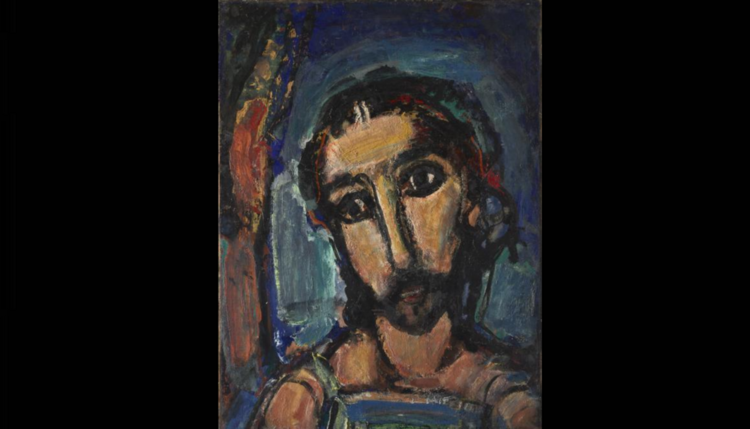A Homily for the Solemnity of All Saints
Readings: Revelation 7:2-4, 9-14 1 John 3:1-3 Matthew 5:1-12a
Do you have a favorite picture of Jesus? For some 40 years, in my breviary, I’ve carried a close-up of Christ’s face. It is from a crucifixion scene of Fra Angelico.
The pre-Raphaelites are my favorite school of artists, though none of their images of our Lord is my favorite. No, that would be “Head of Christ,” by Georges Rouault, a French Fauvist and Expressionist painter. I’ve made it the home screen on my iPhone.
The Fauvists employed vivid colors and minimal detail with heavy use of paint itself. The result in my favorite image of Christ is icon-like. Though thoroughly modern in style, Christ’s eyes are deep and prominent. His features are elongated, much like those in Eastern Christian icons. He seems equally sad or joyful. Better to say, fully tranquil.
Fortunately, none of us must choose a single image of Christ. And the Solemnity of All Saints reminds us just how many such images there are. Indeed, there is one for every man and woman, every saint, who lived out his or her baptismal calling. Because those waters called us to become another Christ, living in a different land and time.
After this I had a vision of a great multitude,
which no one could count,
from every nation, race, people, and tongue.
They stood before the throne and before the Lamb,
wearing white robes and holding palm branches in their hands (Rv 7:9)
Christ came into our world to claim it for God, in whose likeness we were made. He entered our history to reproduce himself, the loving and obedient Son, the one who surrenders to his Father by giving himself to all other men and women. Every time one of Christ’s disciples lives out the same calling in his or her life, a new image of Christ, a new visage is fashioned until all of creation has been made Christic, conformed unto his likeness.
Beloved, we are God’s children now;
what we shall be has not yet been revealed.
We do know that when it is revealed we shall be like him,
for we shall see him as he is (1 Jn 3:2).
Save when we see Christ in the signs of the sacraments, none of us has ever seen the face of Christ. We are two millennia too late for that. We must content ourselves with favored artistic depictions.
But if we have seen one of Christ’s holy ones in the flesh, the men and women who have gone before us, having lived out their baptismal calling, we have indeed seen the face of Christ. And we see him now in the faces of those struggling to be holy.
Last week, while I was stopped at a traffic light, a very young, small Hispanic woman walked in front of my car. A shopping sack and a gangling child were attached to her. The child’s arms and legs were wrapped around her as she crossed the street. He seemed to have leapt into her arms, but now, being carried by her, he was so secure, almost asleep. She was so young! She might have been an older sister, carrying her brother or maybe this was a Madonna and Child. Either way, I saw Christ in her.
The Christ who walked among us had only one visage. The cosmic Christ, who will be revealed come the end, has so many! That’s why he came to us. So that the Father could look out upon a redeemed and sanctified creation and see nothing save the (many) faces of his beloved Son.








